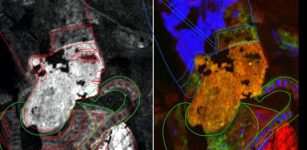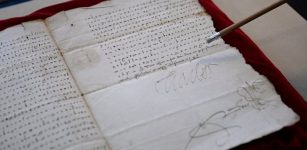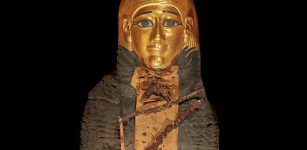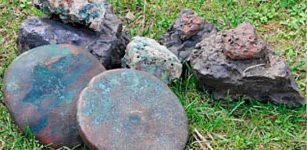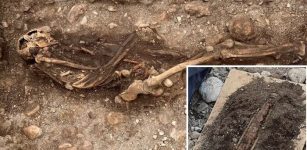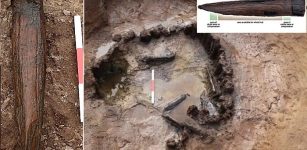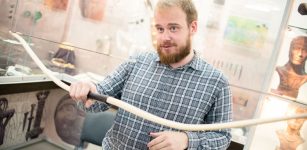Piece Of Puzzling Roman Artifact Discovered In Belgium
Jan Bartek - AncientPages.com - In Kortessem, Belgium, a metal detectorist has found a fragment of a puzzling Roman artifact. The finder reported his mysterious object to the Onroerend Erfgoed agency, which has thoroughly investigated the rare find that was part of a Roman dodecahedron.
Patrick Schuermans is an experienced hobby archaeologist who has been searching for years in the province of Limburg with his metal detector. According to a press release from the Flanders Heritage Agency, Schuermans will donate his find to the Gallo-Roman Museum of Tongeren, hoping it will be exhibited. It is only the second dodecahedron to be found in Flanders.
A fragment of the mysterious artifact found in Belgium. Credit: Flanders Heritage Agency
The Grand Curtius museum in Liège houses a copy found in a grave in Bassenge at the end of the 19th century. The Gallo-Roman Museum of Tongeren keeps a copy found around 1939, just outside the Roman city wall of Tongeren.
Dodecahedrons are 12-sided bronze objects with a hollow center, circular holes on each side, and small balls on each corner. Created using a 'lost wax' technique, the purpose of these geometric Roman objects remains a riddle. In total, about 120 specimens have been unerted in Europe. Despite the extensive reach of the Roman empire, most dodecahedrons have been found in parts of the Empire that coincide with the Celtic civilization, the Flanders Heritage Agency stated.
Dodecahedrons still puzzle archaeologists and historians. Over the years, many hypotheses have been formulated about the function of these foreign objects, but there is no conclusive explanation.
Yet there is increasing evidence that dodecahedrons may not have been practical objects, such as measuring instruments. The known specimens are too different in dimensions and details for that.
According to the archaeologists of Onroerend Erfgoed, their significance should probably be sought in the magico-religious sphere. This may explain why many dodecahedrons are linked to burial finds. it should also be added that Celtic druids were magico-religious specialists.
It is strange though, that dodecahedrons have not been found in the area around the Mediterranean Sea and south of it. After all, most specimens have been unearthed in the northwestern part of the Roman Empire, including in present-day Belgium, the Netherlands, Germany, France, and the United Kingdom, i.e. an area that coincides with that of the Celtic civilization. That is why they are sometimes also referred to as Gallo-Roman dodecahedrons. The known complete specimens differ in detail in appearance, and they also vary in size and weight. Most are between 4.5 and 8.5 centimeters in size.
An example of a complete Roman dodecahedron. Credit: Flanders Heritage Agency
The fragment recently discovered in Limburg was part of a dodecahedron measuring 5 to 6 cm. The researchers of Onroerend Erfgoed found traces of a repair on the piece.
Based on the fracture surfaces, they suspect this dodecahedron may have been broken during a ritual as early as the Roman period. But much more importantly, thanks to the correct working method of the metal detectorist, archaeologists know for the first time the exact location of a Roman dodecahedron in Flanders, which opens the door for further research.
See also: More Archaeology News
Scientists will continue to monitor the location in the coming years in collaboration with the finder. Older and newer finds from the same location will be inventoried and studied to discover what happened on this site 2,000 years ago. Should the site ever be threatened, an archaeological investigation will be carried out. The use of a metal detector is subject to specific regulations in Flanders.
Written by Jan Bartek - AncientPages.com Staff Writer






